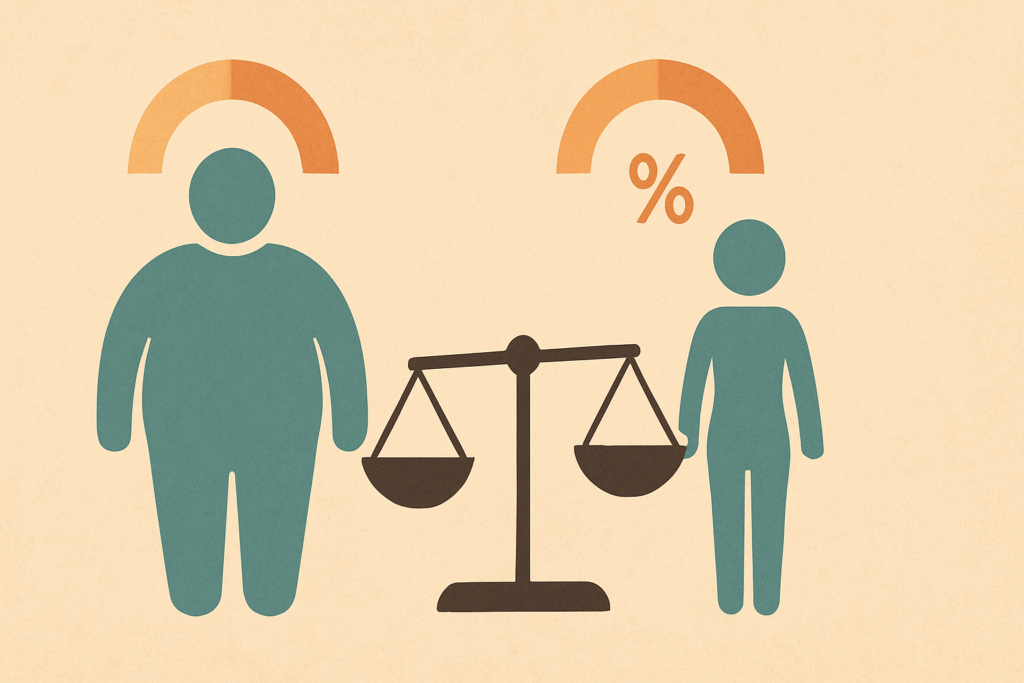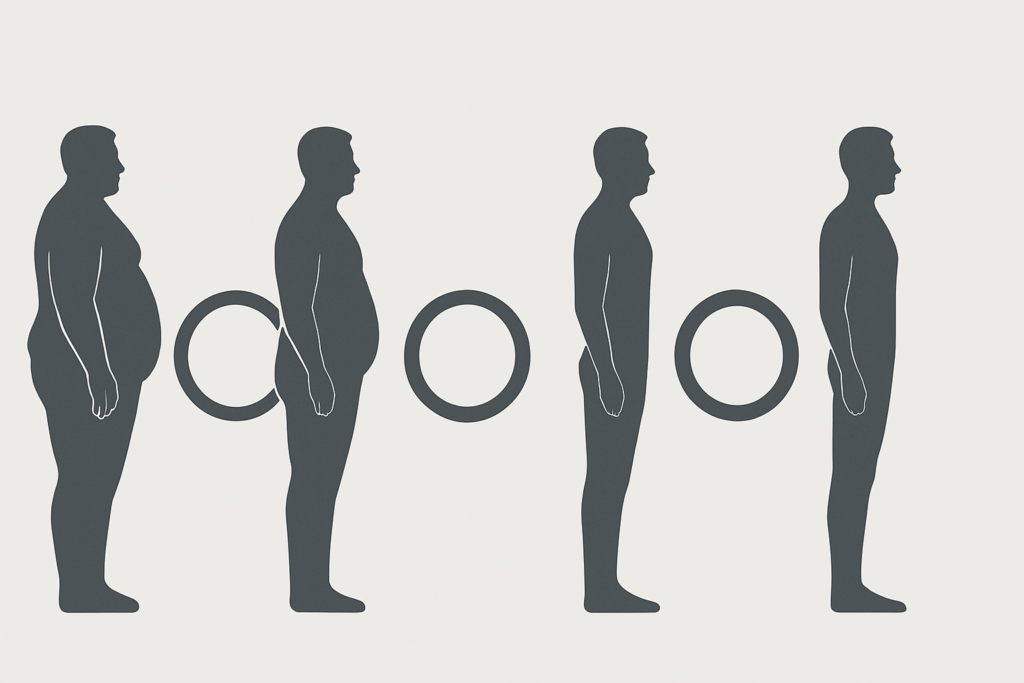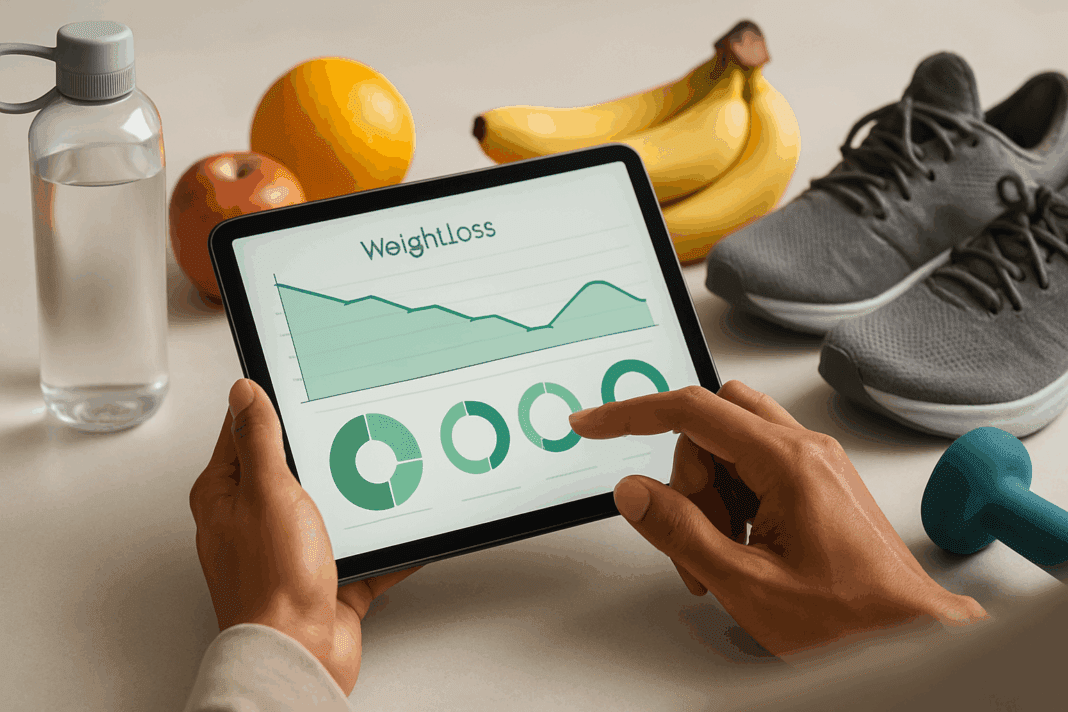Introduction: Why Measuring Weight Loss by Percent Matters
Understanding how to monitor weight loss effectively is a vital part of any health and wellness journey. With so much focus placed on body weight in health culture, it is easy to become fixated on the number shown on a bathroom scale. However, a more nuanced and informative tool is available: the percent weight loss calculator. This simple yet powerful method of measurement offers a more contextual understanding of weight change by relating the amount of weight lost to a person’s starting weight. It provides a realistic benchmark for progress, especially when trying to achieve sustainable, long-term goals. For individuals looking to improve their nutritional habits or embark on a wellness plan grounded in scientific principles, integrating a percent weight loss calculator into their strategy can provide measurable motivation and actionable insight.
You may also like: Expert-Backed Weight Loss Tips for a Healthier Lifestyle: What You Need to Know for Long-Term Weight Control and Wellness

How a Percent Weight Loss Calculator Works
Unlike absolute weight measurements, which fluctuate frequently and offer little context, percentage-based calculations standardize weight loss relative to one’s starting point. This means that a person weighing 250 pounds who loses 10 pounds has achieved a different level of progress than someone starting at 160 pounds who loses the same amount. A percentage of weight loss calculator accounts for this difference, creating a fairer and more accurate representation of effort and success. When tracking improvements in health outcomes such as blood pressure, insulin sensitivity, or cholesterol levels, percent-based weight loss often correlates better with meaningful physiological changes. Therefore, it is not only an effective motivational tool but also a clinically relevant one.
The Medical Relevance of Percent-Based Tracking
In medical and nutritional research, percentage-based weight loss is widely used to quantify progress and predict potential health benefits. Studies often report results in terms of the percentage of weight lost because this metric provides a standardized way to compare across diverse body types. For example, a 5% reduction in body weight has been linked to significant improvements in metabolic function, regardless of the individual’s baseline size. This makes the percent weight loss calculator a valuable tool for individuals and healthcare providers alike, especially when used to evaluate the efficacy of dietary interventions, exercise programs, or behavioral therapies.

Simple Formula, Powerful Insights
To use a percent weight loss calculator, one must first understand the basic formula. The calculation involves taking the amount of weight lost, dividing it by the starting weight, and then multiplying by 100. For instance, if someone begins at 200 pounds and loses 10 pounds, the percent weight loss would be (10 / 200) x 100 = 5%. This figure offers a clearer and more equitable assessment of progress than simply stating that 10 pounds were lost. The beauty of the percentage of weight loss calculator lies in its simplicity and adaptability. It can be used weekly, monthly, or at any point during a weight loss journey to measure cumulative or incremental success.

Reducing Emotional Dependence on the Scale
Furthermore, using a percent weight loss calculator can help mitigate some of the psychological pitfalls associated with traditional weighing practices. Many individuals struggle with the emotional highs and lows tied to daily or weekly scale readings. Because body weight can fluctuate for reasons unrelated to fat loss—such as water retention, hormonal shifts, or muscle gain—those numbers may not always reflect true progress. However, assessing weight loss in terms of percentages over a longer period can offer a more stable and accurate reflection of trends. It encourages patience and consistency, helping individuals focus on sustainable changes rather than fleeting results.

Setting Health-Oriented, Realistic Goals
Integrating a percentage of weight loss calculator into a personalized wellness strategy is also valuable for setting realistic and health-oriented goals. Experts often recommend targeting a 5% to 10% weight reduction over several months for individuals with overweight or obesity. This level of weight loss is both achievable and associated with tangible improvements in health markers, including blood sugar regulation and cardiovascular function. By framing goals around percentages rather than pounds, individuals are more likely to avoid the unrealistic expectations that often accompany diet culture and instead pursue objectives grounded in evidence-based medicine.

Clinical Applications in Patient Care
In clinical settings, the percent weight loss calculator has become a standard tool used by physicians, dietitians, and bariatric specialists. During consultations, practitioners frequently assess whether patients have met the threshold of clinically significant weight loss. Reaching or exceeding a 5% loss of initial body weight can influence treatment decisions, such as adjusting medications for hypertension or type 2 diabetes. These adjustments are often made because even modest weight loss can drastically reduce the risk of associated complications. Therefore, percent-based measurements offer a dual benefit: they provide psychological reinforcement while also informing clinical care.
Community and Group Wellness Programs
Moreover, public health initiatives and community wellness programs have increasingly incorporated the percent weight loss calculator as a metric for group-based success. In lifestyle intervention trials, weight loss competitions, or corporate wellness challenges, this method ensures fair comparisons between participants with different body sizes. Instead of focusing on who lost the most weight overall, success is framed around proportional progress. This shift in perspective fosters inclusivity and encourages all participants, regardless of starting weight, to feel empowered by their achievements.
A Nutritional Perspective on Percent Weight Loss
From a nutritional standpoint, the percent weight loss calculator can be used in conjunction with dietary tracking to assess the effectiveness of food-related changes. For instance, individuals adopting a DASH diet, Mediterranean-style eating, or a low-sodium nutritional plan may wish to monitor how their dietary shifts impact their overall health. By calculating weight loss as a percentage of starting body weight, these individuals gain clearer feedback about how nutrition interventions translate into physiological outcomes. Over time, these insights can support behavior modification and reinforce the value of maintaining consistent, healthy eating habits.
Applications for Athletes and Fitness Enthusiasts
Athletes and fitness enthusiasts also benefit from tracking weight changes in terms of percentages, especially during periods of intentional body recomposition. For individuals whose primary focus is on improving strength or muscle mass rather than simply losing weight, the absolute number on the scale may offer limited insight. However, the percent weight loss calculator can provide useful benchmarks when cutting fat mass while preserving lean tissue. When paired with tools like body composition scans or waist circumference measurements, percent weight loss data contributes to a more comprehensive picture of physical transformation.

Technology and the Rise of Weight Loss Calculators
In the digital age, access to reliable and user-friendly percent weight loss calculators has never been easier. Many reputable health websites and mobile applications now include built-in calculators that automatically compute the percentage of weight lost once users enter their starting and current weights. Some advanced platforms even track historical data and generate progress reports over time, enabling users to visualize their trajectory and maintain motivation. For those managing chronic conditions such as prediabetes, heart disease, or PCOS, this ability to track trends in an accessible format can make a significant difference in long-term self-management.
Avoiding an Overemphasis on Weight Alone
Importantly, while the percent weight loss calculator is a valuable tool, it should be interpreted in context. Weight loss alone is not the sole indicator of health, and an overemphasis on weight can sometimes obscure other critical aspects of wellness, such as mental health, muscle mass retention, and nutrient sufficiency. Therefore, experts recommend using this calculator as one of several metrics in a comprehensive health tracking strategy. Pairing percentage-based calculations with other indicators—like blood pressure, cholesterol levels, physical fitness tests, and mood assessments—offers a more holistic understanding of well-being.
Supporting Positive Body Image and Mindful Wellness
Additionally, conversations around body image and societal standards make it important to approach weight loss tracking with sensitivity and nuance. The percent weight loss calculator, when used appropriately, can promote body positivity by focusing on personal progress rather than arbitrary ideals. By emphasizing relative improvement and individualized goals, it helps shift the conversation from appearance to function, from numbers to well-being. When supported by healthcare professionals who prioritize patient-centered care, this tool can enhance motivation without reinforcing harmful narratives.
Education and Long-Term Behavior Change
Health educators and dietitians often incorporate the percentage of weight loss calculator into behavior change counseling. For clients aiming to build sustainable habits, understanding how small changes compound over time is key. Losing even a few pounds may feel insignificant when viewed in isolation, but when reframed as a meaningful percentage, it reinforces the idea that incremental effort yields substantial reward. This cognitive reframe has been shown to improve adherence to wellness plans, especially when clients receive regular, supportive feedback based on their percentage progress.
Medical Monitoring After Treatment or Surgery
For individuals pursuing weight management after a medical procedure, such as bariatric surgery or treatment for hormonal imbalance, the percent weight loss calculator can also serve as a valuable post-treatment assessment tool. Monitoring percentage loss enables both patients and providers to evaluate whether recovery goals are being met, whether nutritional interventions are effective, and whether additional support is required. In many cases, follow-up care is guided by these metrics, highlighting their importance in ensuring long-term success.
Teaching Tools in Nutritional Science and Public Health
Educators, too, can utilize the concept of percent weight loss to teach broader principles in nutrition science and health promotion. In academic settings, students learning about energy balance, metabolism, or chronic disease prevention benefit from real-world examples of how weight tracking tools are used in practice. By calculating and interpreting percent-based weight changes, students develop a more comprehensive understanding of the physiological, behavioral, and societal factors that influence health outcomes. This educational approach supports critical thinking and prepares future professionals for evidence-based decision-making.
Frequently Asked Questions: Percent Weight Loss Calculator
1. How can a percent weight loss calculator support mental resilience during long-term weight management?
Using a percent weight loss calculator can reinforce a growth mindset, which is critical for psychological resilience. Rather than focusing on daily weight fluctuations, individuals can track gradual percentage changes over time, helping them detach emotionally from the scale. This method promotes a more stable self-perception and encourages positive reinforcement for effort rather than perfection. For individuals with a history of yo-yo dieting or disordered eating patterns, reframing weight tracking through a percentage lens may reduce anxiety and foster self-compassion. The percent weight loss calculator thus becomes more than a numerical tool—it serves as a psychological anchor that sustains motivation through plateaus and setbacks.
2. Can percent weight loss calculators be useful for people who are underweight and trying to gain weight?
Although traditionally used to measure fat loss, the underlying methodology of a percent weight loss calculator can be adapted to track weight gain in clinical scenarios. For individuals recovering from malnutrition, eating disorders, or chronic illness, understanding weight gain in percentage terms can provide encouraging, incremental feedback. Dietitians often use similar calculations in reverse to assess whether patients are making adequate nutritional progress. This approach can be especially beneficial in geriatric nutrition or post-hospitalization care where restoring lean mass is critical. In these contexts, the percentage of weight loss calculator is a flexible framework that can be reoriented to support weight restoration goals.
3. How does using a percentage of weight loss calculator affect patient-provider communication in healthcare settings?
The use of a percentage of weight loss calculator can standardize communication between patients and healthcare professionals. Rather than relying on vague descriptors like “some weight loss” or “a few pounds,” providers can offer clear benchmarks such as “you’ve lost 8% of your starting weight, which is clinically significant.” This enhances the transparency of care plans and fosters collaborative goal-setting. It also makes it easier for multidisciplinary teams—including physicians, dietitians, and fitness coaches—to align their strategies. Overall, the shared language established through percent-based tracking helps to build trust and mutual understanding in health consultations.
4. Are there specific groups for whom the percent weight loss calculator may not be appropriate?
While the percent weight loss calculator is a valuable tool, it may not be appropriate for every population. Individuals with conditions that cause fluid retention—such as heart failure or kidney disease—may see weight fluctuations that do not reflect actual fat loss or gain. Similarly, those in the early stages of gender-affirming care, postpartum recovery, or cancer treatment may experience body changes that require different assessment metrics. For these groups, alternative health indicators such as strength gains, energy levels, or biochemical markers may provide a more accurate picture. In such cases, the percentage of weight loss calculator should be used cautiously and supplemented with other health measurements.
5. How do modern digital health platforms enhance the accuracy and utility of percent weight loss calculators?
Today’s digital health tools often integrate percent weight loss calculators into broader analytics platforms, enabling real-time tracking, personalized feedback, and long-term data visualization. These features help users correlate percentage changes with other health markers like blood glucose or blood pressure trends. Some advanced systems even use AI to detect patterns and offer behavior modification suggestions tailored to the user’s data. For clinicians, these platforms improve remote monitoring and enable proactive interventions. As wearables and telehealth services expand, the percent weight loss calculator becomes a more dynamic component of integrated care systems.
6. Can using a percent weight loss calculator improve weight maintenance after initial weight loss?
Maintaining weight loss is often more difficult than achieving it, and a percentage-based tracking system can help bridge that gap. By continuing to monitor percent changes post-goal, individuals remain vigilant to small upward trends that might otherwise go unnoticed. This early awareness allows for timely adjustments to eating or exercise habits before significant regain occurs. Many weight maintenance studies show that ongoing self-monitoring is one of the strongest predictors of long-term success, and using a percentage of weight loss calculator can enhance this habit by providing structured, objective data. It helps reinforce the mindset that weight maintenance is an active, evolving process rather than a static outcome.
7. How does the percent weight loss calculator integrate with performance goals in sports or bodybuilding?
Athletes often need to fine-tune their body composition for specific performance outcomes, and a percent weight loss calculator offers a strategic advantage. Rather than focusing solely on weight loss, athletes can use percentage metrics to align fat reduction with lean muscle preservation. For instance, cutting 3% of body weight before a competition might be ideal for optimizing power-to-weight ratio without compromising strength. These calculations also aid in safe “cutting phases” by allowing trainers to monitor loss rates and prevent excessive caloric deficits. In elite sports, small shifts in percent weight loss can significantly influence endurance, agility, and overall performance.
8. How can families or support groups use a percentage of weight loss calculator to promote shared wellness goals?
Families and peer support groups can leverage the percentage of weight loss calculator to create a sense of communal accountability and encouragement. When everyone uses a proportional metric, comparisons feel more equitable and less competitive, regardless of individual starting points. This fosters a supportive atmosphere where success is defined by effort and progress, not just numbers. Shared tracking can also serve as a conversation starter around healthy habits, meal planning, or stress management. In family wellness challenges or group coaching sessions, using percent-based benchmarks can unify participants and help sustain motivation over time.
9. Are there any psychological risks associated with frequent use of percent weight loss calculators?
Like any measurement tool, the percent weight loss calculator can pose psychological risks if used obsessively or interpreted without context. Individuals prone to perfectionism or disordered eating may become overly fixated on reaching specific percent thresholds. To mitigate this, mental health professionals often recommend balancing quantitative tracking with qualitative self-assessments, such as mood, energy, and quality of sleep. It’s also beneficial to work with healthcare providers who can contextualize data within a holistic health framework. Used responsibly, the calculator is a motivational aid, but users should remain aware of their mental and emotional responses to numerical feedback.
10. What trends are emerging in the evolution of percent weight loss calculators?
As health tech advances, percent weight loss calculators are evolving beyond static tools into personalized, AI-enhanced features within comprehensive wellness ecosystems. Future trends include integration with metabolic health assessments, stress biomarkers, and even genetic predisposition data. Some platforms are beginning to offer adaptive algorithms that adjust weight loss recommendations based on sleep quality, hormone levels, or inflammation markers. The emergence of voice-enabled and wearable-compatible calculators is also making data tracking more intuitive and less burdensome. As these innovations continue, the percentage of weight loss calculator will likely shift from a standalone metric to a real-time, predictive tool for guiding lifestyle medicine and preventive care.
Conclusion: Reflecting on Long-Term Wellness and the Role of Percent Weight Loss
As we consider the journey toward lasting health improvement, it becomes increasingly clear that progress must be measured with accuracy, perspective, and compassion. The percent weight loss calculator offers all three. By framing weight change in relative terms, it empowers individuals to see success in proportion to their own unique starting point. This context-sensitive approach not only provides motivation but also reinforces the principle that meaningful change need not be extreme to be effective. Whether supporting dietary improvements, medical interventions, or behavior change strategies, the calculator serves as a practical and psychologically affirming guide.
Importantly, integrating the percentage of weight loss calculator into a broader health strategy reminds us that health is multifaceted. It encourages a shift from superficial benchmarks to holistic goals, from rapid fixes to thoughtful consistency. As readers consider incorporating this tool into their own wellness routines, they are invited to move forward with clarity, confidence, and a renewed commitment to long-term vitality. In a world of quick claims and unrealistic expectations, the percent weight loss calculator stands as a symbol of grounded progress and informed self-care—values that lie at the heart of nutrition, prevention, and lifelong wellness.
Further Reading:
How to calculate your weight loss as a percentage
Use Our Weight Loss Calculator to Determine Your Daily Calorie Goal to Lose Weight


